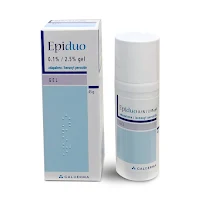Benzoyl Peroxide and Topical Tretinoin
Introduction
At work, a provisional registered pharmacist asked me an interesting question:
- Why at our hospital, patients often prescribed with benzoyl peroxide gel in the morning and topical tretinoin at night for acne?
Benzoyl Peroxide
First-line treatment of acne should be benzoyl peroxide. We will normally begin treatment with lower strength product.
- We can apply 2.5% to 10% concentration topically once or twice daily.
Concentrations of benzoyl peroxide that are higher than 2.5% may not contribute to increased benefit and may be more likely to cause skin irritation.
- In one study, 2.5% benzoyl peroxide was as effective as 10% benzoyl peroxide in reducing the number of inflammatory acne lesions.
- In addition, the time required for onset of action for varying concentrations of benzoyl peroxide appears to be similar.
Visible improvement typically occurs within 3 weeks, with maximum result evident after 8 to 12 weeks.
Patients should also be advised that benzoyl peroxide can cause bleaching of the hair and clothing.
Benzoyl peroxide increase the risk of sunburn.
- Avoidance of sunlight is not always possible, hence an appropriate sunscreen should be used.
Topical Retinoids
Retinoids are teratogenic, hence should be avoided in women who are planning to become pregnant, are pregnant or are breastfeeding. Choose a cream for patients with dry or sensitive skin, and a gel for those with oily skin.
The topical retinoids are applied once daily and traditionally at night due to photolability reported with tretinoin.
- Adapalene and trifarotene is more stable.
- Moreover, newer formulations of tretinoin, tretinoin, tretinoin gel microsphere and micronized tretinoin 0.05% in a hydrogel vehicle, are less affected by light exposure than their precursors.
Improvement with a topical retinoid should be evident by 6 weeks and increase for up to 6 months.
- If the response to adapalene or tretinoin is not adequate after 6 weeks, change to topical combination (e.g. with benzoyl peroxide) or try a higher strength.
Benzoyl Peroxide and Topical Tretinoin
Topical tretinoin should not be applied at the same time as benzoyl peroxide.
- Tretinoin is less stable when exposed to benzoyl peroxide due to oxidation, an effect magnified during light exposure.
- Adapalene, tretinoin gel microsphere, micronized tretinoin gel, tazarotene and trifarotene remain more stable than tretinoin in the presence of benzoyl peroxide.
A combination product containing adapalene and benzoyl peroxide is available.
External Links
- Comparing 2.5%, 5%, and 10% benzoyl peroxide on inflammatory acne vulgaris
- Systematic review on the rapidity of the onset of action of topical treatments in the therapy of mild-to-moderate acne vulgaris, 2014
- Chemical stability of adapalene and tretinoin when combined with benzoyl peroxide in presence and in absence of visible light and ultraviolet radiation
- The stability of tretinoin in tretinoin gel microsphere 0.1%
- The effect of simulated solar UV irradiation on tretinoin in tretinoin gel microsphere 0.1% and tretinoin gel 0.025%
- Safety and efficacy of micronized tretinoin gel (0.05%) in treating adolescent acne

Comments
Post a Comment